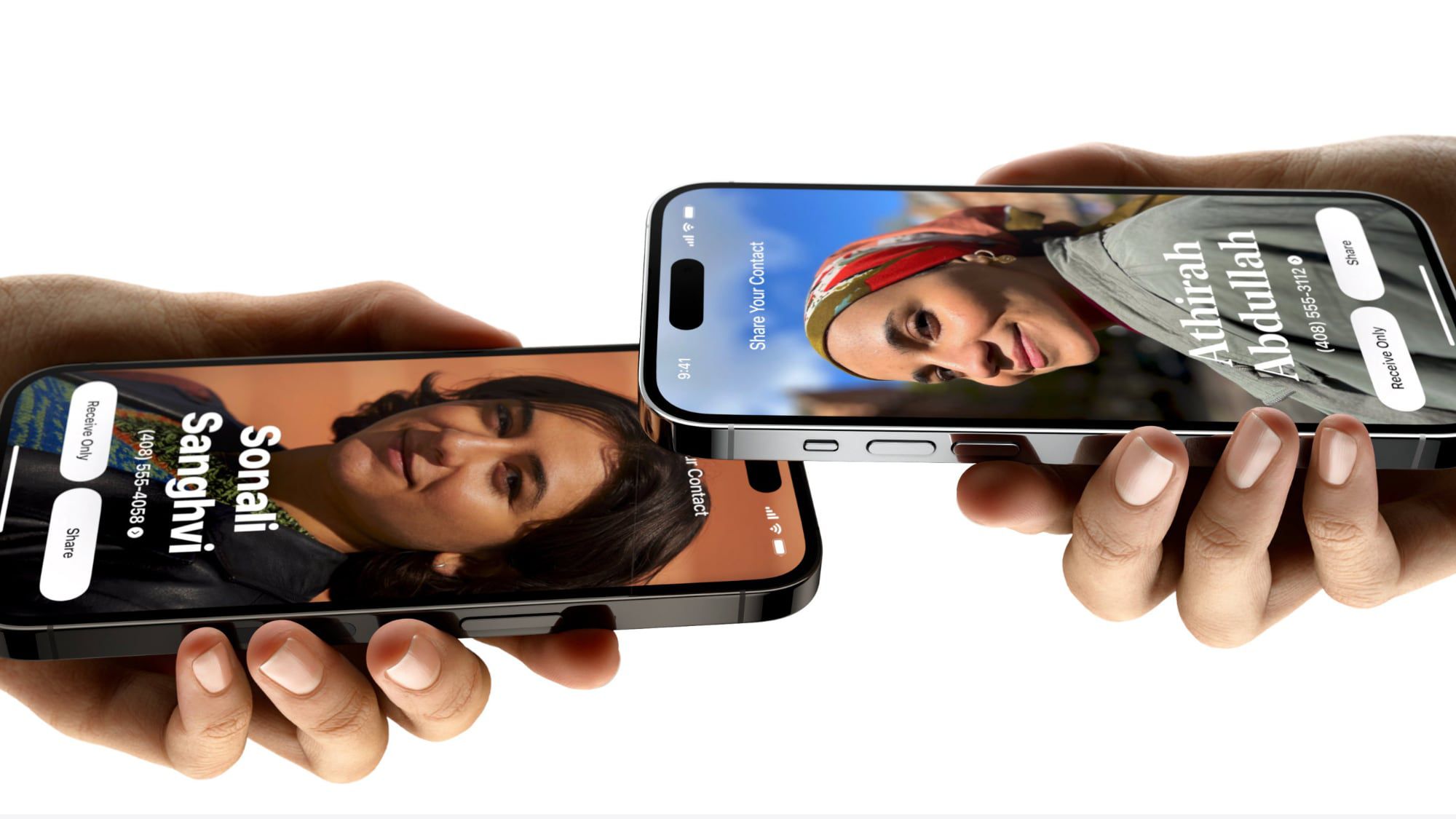With iOS 17.1 and watchOS 10.1, Apple introduced a new NameDrop feature designed to let users place Apple devices close together to quickly exchange contact information. Contact information is shared with the user’s explicit permission, but some news organizations and police departments are spreading misinformation about how to do this.
As he pointed out Washington PostThere have been warnings about NameDrop appearing on FaceTime. Police departments in Pennsylvania, Oklahoma, Ohio and other states suggest that contact information can be shared “just by holding your phones close together.” from Chester City Police Department In Ohio:
Important Privacy Update: If you have an iPhone and took the latest iOS 17 update, they have set a new feature called NameDrop to default. This feature allows sharing your contact information just by bringing your phones close together. To turn this off, go to Settings, General, AirDrop, Group Devices Together. Change to off.
Although NameDrop is turned on by default, the way it works is more subtle than simply placing two iPhones near each other.
NameDrop works when two iPhones with iOS 17.1 or an iPhone with iOS 17.1 and an Apple Watch with watchOS 10.1 are placed next to each other, almost as if in touch. When the two devices are in close contact and unlocked, a pop-up window appears asking users to share contact information or a photo.
Contact information is not shared automatically, it is a user-initiated process that requires both people to exchange information to accept the transfer. Although an unintended exchange can occur, it requires the user to unlock their device and accept the sharing prompt for this to happen.
Several police departments posted the above warning, which was shared widely on Facebook and other social media networks. For example, a message from the Noble County Sheriff’s Office in Ohio had more than 70,000 shares, while a warning from the Dewey Police Department in Pennsylvania was shared 11,000 times. After criticism from some commenters, Noble County edited its post to clarify that there was a pop-up to move the content, and Dewey County said it is trying to “engage parents with their children,” but many people who saw the original post may not see the updates.
The goal of this post was to engage parents with their kids and what they are doing on their devices, not fear mongering as suggested. We suggest everyone to research new technology and updates to learn more about what is out there, especially for kids
Several local news stories also shared similar questionable information about NameDrop. KDKA-TV in PittsburghFor example, he interviewed several people and included quotes suggesting that NameDrop happens automatically.
“That’s why I turned it off because I don’t have any use for it. I don’t even have my phone at work, so I don’t really have any use for it. But I think the default on might be a little controversial just because I think exposing the contact “Your decision should be a conscious decision and not something that can happen by mistake.”
“This is a bit worrying, and I think it should be an optional feature rather than happening automatically,” Liz Jones said.
If anything, NameDrop has the potential to be more annoying than dangerous, simply because it’s likely to be activated when your phone is next to someone else’s phone and unlocked, in a situation like dinner or a meeting. Due to negative feedback, Apple may in a future update turn off NameDrop by default, but those who want to disable it now can do so by opening the Settings app, going to AirDrop, and turning off Bringing Devices Together.

“Analyst. Web buff. Wannabe beer trailblazer. Certified music expert. Zombie lover. Explorer. Pop culture fanatic.”








More Stories
It certainly looks like the PS5 Pro will be announced in the next few weeks.
Leaks reveal the alleged PS5 Pro name and design
Apple introduces AI-powered object removal in photos with latest iOS update